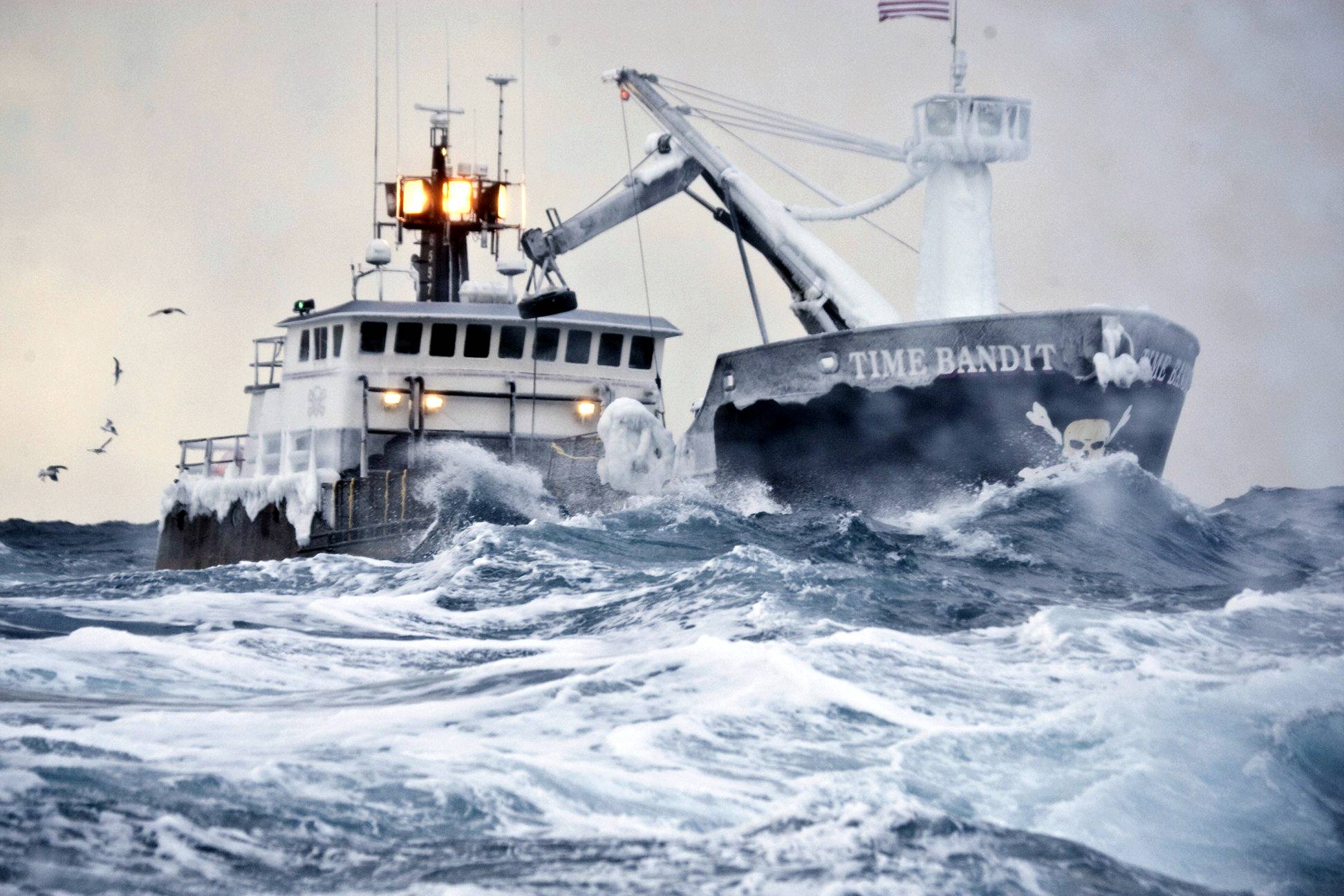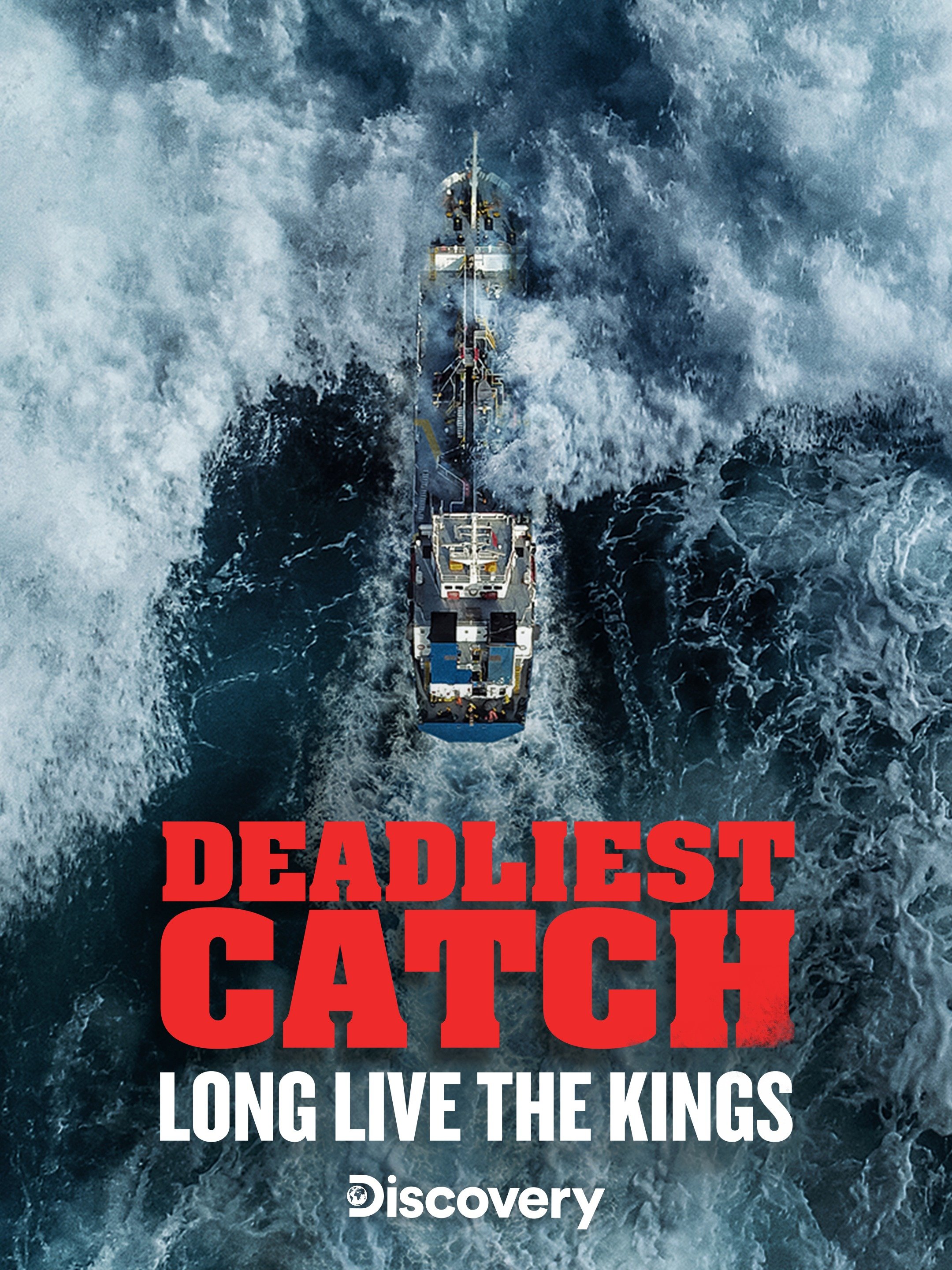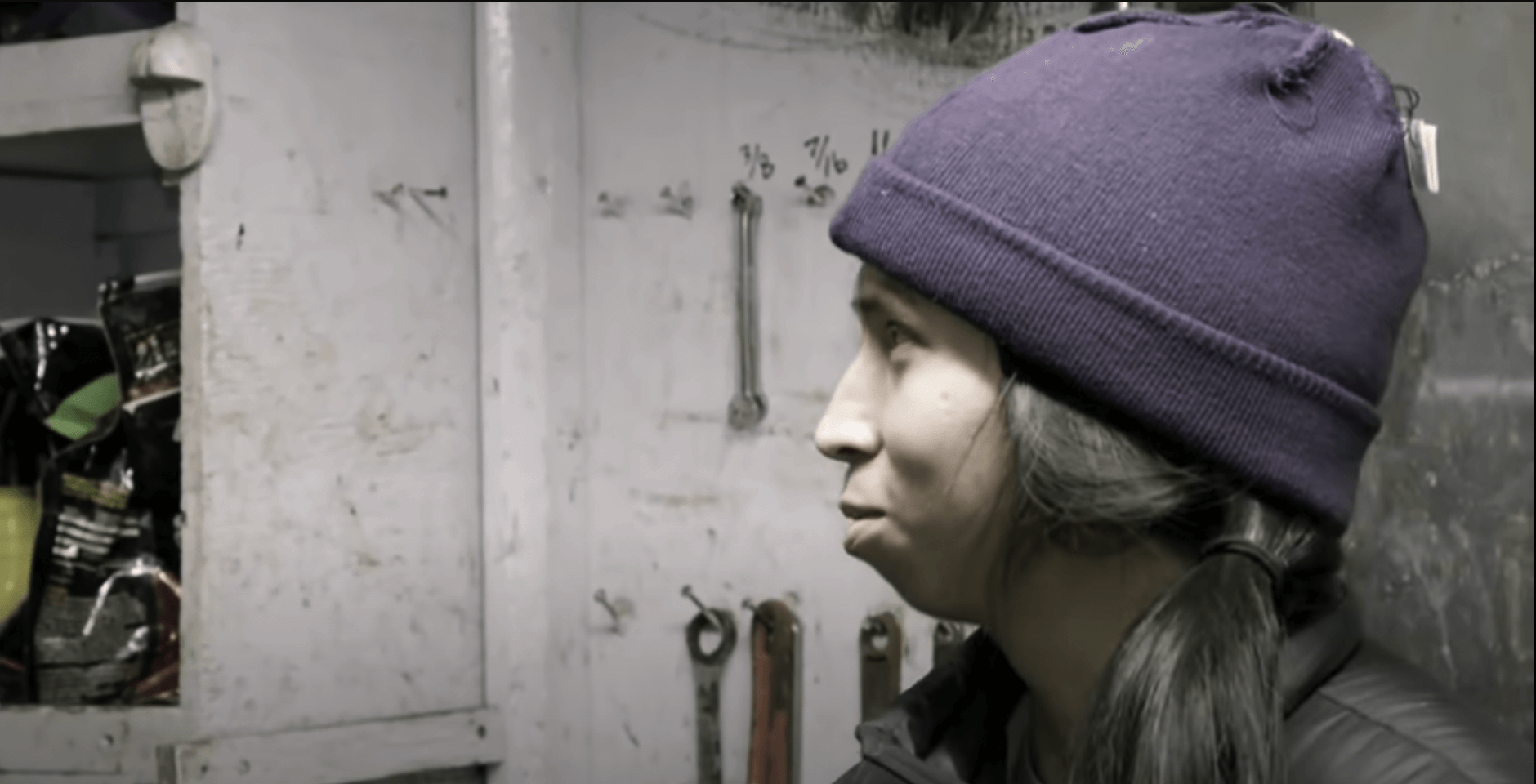Deadliest Catch Deaths: Understanding The Mortal Risks Of Crab Fishing
The Bering Sea is, in a way, a place that truly tests the limits of human endurance and, quite often, life itself. For viewers of the popular television show, “Deadliest Catch,” the constant danger faced by crab fishermen is, you know, a very real part of the appeal. This show pulls back the curtain on a profession where the term “deadly” is not just a dramatic word, but a harsh reality, a daily companion out on the water. It’s a job where, basically, the ocean can be a very unforgiving boss, and the stakes are always incredibly high.
So, when we talk about deadliest catch deaths, we are truly looking at the profound impact of working in such a perilous environment. The word "deadly" itself, as a matter of fact, applies to an established or very likely cause of death. In the context of crab fishing, the established causes are many: brutal weather, massive waves, incredibly heavy equipment, and the sheer isolation of being out at sea. This work isn't just tough; it's genuinely hazardous, and it often leads to situations where, you know, the ultimate price might be paid.
Understanding these risks helps us, in some respects, appreciate the courage and sacrifice of those who pursue this livelihood. The phrase "mortal" implies that death has occurred or is a very present possibility, and for the crews of the Deadliest Catch, that possibility is always there, lurking beneath the waves. This article will explore the inherent dangers of Alaskan crab fishing and, too it's almost, shed light on why the topic of `deadliest catch deaths` resonates so deeply with so many people.
Table of Contents
- The Inherent Dangers of Crab Fishing
- The Human Element and Mortal Risks
- Drawing Parallels to Other Deadly Scenarios
- Frequently Asked Questions About Deadliest Catch Deaths
The Inherent Dangers of Crab Fishing
When thinking about the Bering Sea, it's, you know, easy to see why the term "deadly" fits so well. The definition of "deadly" points to something causing or capable of causing death, and the conditions out there certainly fit that description. Fishermen face incredibly harsh weather, with freezing temperatures, powerful winds, and truly enormous waves that can swallow a boat whole. It's a place where, basically, the natural world is at its most extreme, and survival is a constant battle.
The very nature of crab fishing, too, involves working with heavy, dangerous gear on a constantly moving, often ice-covered deck. This combination creates a situation where, in a way, accidents are not just possible, but quite likely. The show itself, you know, often highlights these moments of extreme peril, showing viewers just how close the crews come to disaster on a regular basis. It's a vivid reminder that the ocean, for all its beauty, can also be a truly unforgiving force.
A Deadly Environment
The Bering Sea is, quite frankly, an environment that tests the very limits of what people can endure. We understand that "deadly" applies to an established or very likely cause of death, and the established causes here are numerous. The sheer cold, for instance, can cause hypothermia very quickly if someone falls overboard. The waves, which can be taller than the boats themselves, have the power to knock crew members off their feet, or even, you know, sweep them right into the icy water.
It's not just the water itself; the air is, often, filled with freezing spray, making the decks slick and treacherous. Visibility can drop to nearly nothing during a storm, adding another layer of danger to an already perilous situation. Sig Hansen, for example, is often shown heading through especially dangerous waters during season 21 of Deadliest Catch, which, you know, just goes to show that these risks are an ongoing part of the job. This environment is, quite simply, designed to challenge, and sometimes, it unfortunately wins.
The isolation of the Bering Sea also adds to the mortal risk. Help is, in a way, often far away if something goes wrong. A medical emergency or a serious accident can become much more dire when you're days from shore and proper facilities. This remote setting means that, basically, every precaution has to be taken, and every crew member must rely heavily on their shipmates. It’s a stark reminder that, you know, the ocean doesn't care about human plans or safety nets.
The Equipment and Its Lethal Potential
The tools of the crab fishing trade are, in some respects, just as dangerous as the environment itself. The definition of "lethal" means capable of causing death, and the massive crab pots, the heavy lines, and the powerful machinery used to haul them in are, quite frankly, very much lethal. These pots, you know, weigh hundreds of pounds and swing wildly on deck, posing a constant threat to anyone nearby. A misstep, a moment of distraction, and a person could easily be crushed or swept overboard.
The lines used to pull the pots are also incredibly dangerous. If a line snags or snaps, it can, you know, whip across the deck with tremendous force, capable of breaking bones or causing even worse injuries. The winches and hydraulics that operate this equipment are, basically, powerful enough to tear through metal, so a human body stands very little chance against them. It’s a constant dance with danger, where precision and awareness are, quite frankly, absolutely vital.
Working with this heavy gear in rough seas, especially when the decks are slick with ice and water, multiplies the risk. The boats are, often, pitching and rolling violently, making it incredibly hard to keep your footing or maintain control of the equipment. This combination of powerful machinery and unstable conditions means that, in a way, every single movement carries a potential for harm. It's a job where, you know, even the most experienced fishermen must remain constantly vigilant.
The Human Element and Mortal Risks
The phrase "mortal" implies that death has occurred or is very much possible, and for the people who work on these boats, this is a daily truth. The long hours, the lack of sleep, and the constant physical strain can, you know, wear down even the toughest individuals. Fatigue can lead to mistakes, and in an environment where small errors can have very large consequences, being tired is, quite simply, a huge risk factor.
The emotional toll of the job also plays a part. Being away from family for long stretches, facing constant danger, and working under immense pressure can, in some respects, affect a person's judgment and reaction time. The show often captures these moments of stress and exhaustion, revealing the human cost behind the crab catch. It’s a job that, you know, demands not just physical strength but incredible mental resilience, too.
When we think about `deadliest catch deaths`, it's important to remember that each one represents a real person, a family, and a community deeply affected. The dangers are not just statistics; they are personal tragedies. The show, in a way, brings this reality into our homes, allowing us to witness the bravery and the vulnerability of these fishermen. It helps us understand why, you know, this profession carries such a heavy reputation for danger.
Learn more about the challenges of commercial fishing on our site, and link to this page for more insights into maritime safety.
Drawing Parallels to Other Deadly Scenarios
When we talk about the concept of "deadliest," it's, you know, interesting to see how it applies in different contexts, yet always points to extreme danger. My text, for example, mentions that Lake Michigan is the deadliest lake in America, statistics show, yet there are no lifeguards at 99% of Michigan's public beaches. This, in a way, highlights how environments known for being dangerous can still lack the obvious safety measures one might expect. Similarly, the Bering Sea is known for its danger, and while fishermen take precautions, the inherent risks remain incredibly high, almost like a natural force without a lifeguard.
Another example from my text points to the deadliest recorded tsunami in history, which claimed hundreds of thousands of lives after a magnitude 9.1 earthquake rocked the Indian Ocean in 2004. While a tsunami is a sudden, catastrophic event, and crab fishing is an ongoing, cumulative risk, both are classified as "disasters" because they involve profound environmental effects and, very importantly, loss of life. This comparison helps us, in some respects, grasp the scale of potential harm when nature turns truly unforgiving, something the Bering Sea also does, albeit more frequently and in different ways.
Even thinking about "What are the deadliest animal in the world?" helps us, you know, frame the concept of danger. Just as some animals are inherently lethal due to their nature, the Bering Sea and the act of crab fishing are, in a way, inherently lethal due to their conditions and equipment. The environment itself becomes, arguably, a kind of "deadliest" force that fishermen must constantly contend with. It's a fight for survival against powerful elements, where the odds are, quite often, stacked against them.
Ultimately, the term "deadly" means causing or likely to cause death, synonym lethal. This applies directly to the tools and conditions on a crab boat. Just as someone might be charged with possession of a deadly weapon, the fishermen are, in a way, constantly surrounded by the potential for lethal outcomes. The cobra is one of the world's deadliest snakes, and similarly, the Bering Sea is one of the world's deadliest workplaces. This constant threat is, you know, what defines the job and why the topic of `deadliest catch deaths` is so somber yet so compelling to many.
Frequently Asked Questions About Deadliest Catch Deaths
What makes crab fishing on Deadliest Catch so dangerous?
Crab fishing on Deadliest Catch is, you know, incredibly dangerous because of several factors that combine to create a very high-risk environment. The Bering Sea itself is known for its extremely harsh weather, with freezing temperatures, powerful storms, and huge waves. Furthermore, the work involves handling incredibly heavy and dangerous equipment, like crab pots that weigh hundreds of pounds and powerful winches, on decks that are often slick with ice and water. The long hours and constant physical strain also contribute to fatigue, which, in a way, can lead to serious accidents. It's a combination of nature's fury and, basically, very demanding physical labor.
Have many people passed away while working on Deadliest Catch?
The show Deadliest Catch, you know, highlights a profession that has historically been one of the most dangerous in the world. While the show primarily focuses on the captains and their crews, it reflects the inherent risks of commercial crab fishing in the Bering Sea. Over the years, there have been, unfortunately, several incidents where crew members associated with the show, or the broader crab fishing industry, have passed away, some directly related to incidents at sea. The very title of the show, in a way, underscores the mortal dangers involved, showing that death is, quite frankly, a real possibility in this line of work.
How do the waters of the Bering Sea compare to other deadly places?
The waters of the Bering Sea are, in some respects, comparable to other places known for being extremely deadly, but in a very specific way. My text mentions Lake Michigan as the deadliest lake in America, and the deadliest tsunami in history. These examples, you know, show how natural forces can be incredibly destructive and cause widespread loss of life. The Bering Sea, while not typically causing single, massive events like a tsunami, is constantly deadly due to its persistent extreme conditions and the nature of the work performed there. It's a place where, basically, the environment itself is a constant, rather relentless, threat, making it one of the most perilous workplaces on Earth, day in and day out.
Reflecting on the nature of `deadliest catch deaths` truly brings home the profound risks these fishermen face. The Bering Sea is, in a way, a place where the line between life and death can be incredibly thin, and every voyage is, basically, a testament to courage and resilience. It's a stark reminder that some livelihoods demand an almost unimaginable level of bravery, and the ocean, you know, asks for a very high price from those who seek its bounty.
- Michael Andretti S Biography Fact
- Hotel Pension Steiner Windhoek Namibia
- Who Is Kelly Kay Wiki Age Biodata

Deadliest Catch Wallpapers - Wallpaper Cave

Deadliest Catch Pictures - Rotten Tomatoes

'Deadliest Catch' Deaths: The Most Recent Cast Member to Die